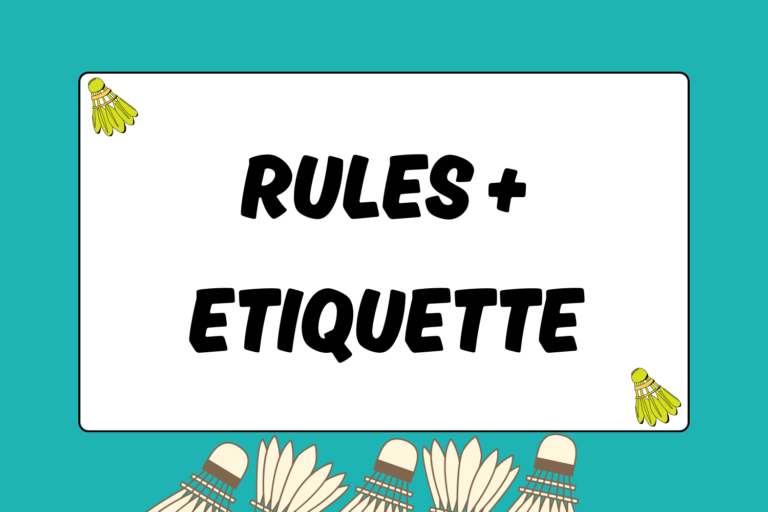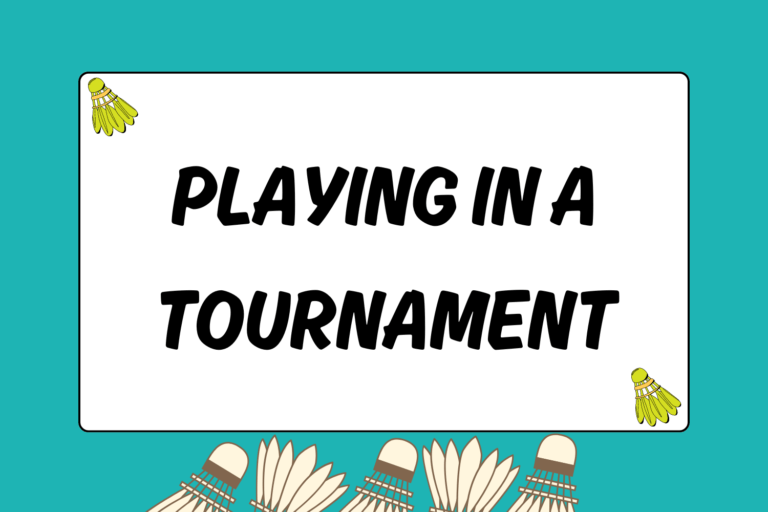Whether your racket has broken or become obsolete, it’s finally time to find a new suitor for your badminton talents. You could go online and buy the most expensive racket you can find, but that doesn’t mean it’s the best one for you.
Badminton rackets come in various sizes and styles, and finding the perfect one can help you transform your game.
Racket’s Significance
Badminton players will tell you, “It’s the player, not the racket.” While there is some truth to that, a more accurate statement would be, “It’s the player and the racket.” You can’t expect a world-class player to compete with a racket with dental floss for strings. It’s the interaction and connection between you and your racket that helps shape your skill and technique.
Think of the racket as an extension of yourself. Then, think about each aspect of your game, from your stroke to your footwork. If any part of your game is lacking, you focus on improving in that area so it won’t hold you back. If your racket is lacking in quality, then it severely hinders your ability to perform at your peak. While you can’t “improve” your racket, you can certainly change it, and doing so removes that ceiling it placed upon you.
Racket Head
You should consider the racket head’s shape and weight when buying a racket. These two aspects play large roles in determining a racket’s effectiveness and style.
While there is a definitive head shape that is ideal, the weight is completely dependent upon your preference.
Shape
There are two distinct head shapes: oval and isometric. Oval heads are typically found on lower-end models, while isometric heads are more prevalent and can be found on a majority of rackets.
Aside from having a slightly smaller surface area than isometric heads, the oval-shaped head has a smaller sweet spot. This matter may be insignificant to some, but if you’re looking to gain any edge you can, stick with isometric heads.
Weight
The weight of the racket head will determine if a racket is head-heavy, balanced, or head-light. These three classes loosely translate to offensive, balanced, and defensive. This means a head-heavy racket is suited for an offensive player and a head-light for a defensive one.
Here is a quick rundown of each weight class:
Head-heavy:
A head-heavy racket enhances your power shots, particularly smashes. While it may not be as quick as a head-light racket, it compensates with increased momentum and force. This type of racket is ideal for players who prioritize powerful strokes and are confident in their shot timing. It’s especially beneficial in singles play where powerful smashes can be game-changers.
Balanced:
A balanced racket allows you to have a balanced attack. While it won’t help you have amazing smashes or smash returns, it’ll allow you to be solid for all shots. This racket is well-suited for doubles players because of its fast pace and power shots.
Head-light:
A head-light racket will increase your racket speed and is especially effective for smash returns. Power is sacrificed for this quickness, but it’s a good fit for players who rely more on finesse shots.
Hot Tip: Finding a Racket’s Balance
To see if a racket is head-heavy or not, begin by balancing the shaft of the racket on your finger. Find the point at which the racket is completely balanced on your pointed finger.
If your finger is in the exact middle of the shaft, the racket is balanced. If your finger is past the midpoint towards the racket head, then it’s head-heavy. If the balance point is towards the handle, it’s head-light.
Racket Shaft
The “flex” is the determining characteristic of a racket’s shaft. To find the right flex, you must be able to honestly and accurately determine your skill level. While each flex tends to cater to different styles, they are also better suited for specific skill levels. The three flexes are:
Extra stiff
Extra stiff rackets have less power but more control. These are generally preferred by professional players because of their superior ability to generate racket speed. The quicker the racket moves, the more the racket will flex and the more power it can generate.
Also, the stiffness tends to be much harder on your wrists and elbows, which makes it ideal for stronger, more experienced players.
Stiff
Despite their name, stiff rackets are essentially the balanced version of flex. They have a moderate amount of power and control and are also popular among professionals because they offer a hybrid combination of power and control.
Flexible
Flexible rackets are the easiest the play with, but not necessarily the best suited for you. Since they flex much more easily than the other two, a greater amount of power is generated. However, it comes at the expense of control, which is much more valuable.
This is why professional players generally avoid flexible rackets—the power gained cannot sufficiently compensate for the control lost.
Racket Strings
When getting your racket restrung, consider the type of strings you’re using and the tension at which you string it. Some strings have excellent durability, while others boast superior repulsion.
Tension, on the other hand, is a little more straightforward. The higher your racket’s string tension is, the more control you’ll have in your shots. However, high string tension also means a smaller sweet spot. As a result, more experienced players tend to string their rackets are higher tensions, while newer players stick with lower ones.
The choice is ultimately yours, but you should consult the person restringing your racket. No one would be more knowledgeable about string types and tensions.
Racket Grip
The original grip is not normally an issue on new badminton rackets because you can easily replace it or grip over it. While the size of the handle may vary, it can surely be manipulated by overgrips or grip replacements.
Your Racket, Your Potential
A new racket won’t instantly make you a better player, but its value should not be underestimated. By the same logic that your partner is part of your doubles team, your racket is part of your team as well.
If a poor racket is preventing you from hitting shots you’re capable of hitting; then you should find a racket that will allow you to continue your growth as a player. The racket you use represents the potential you have, but ultimately, it’s up to you to fulfill it.





